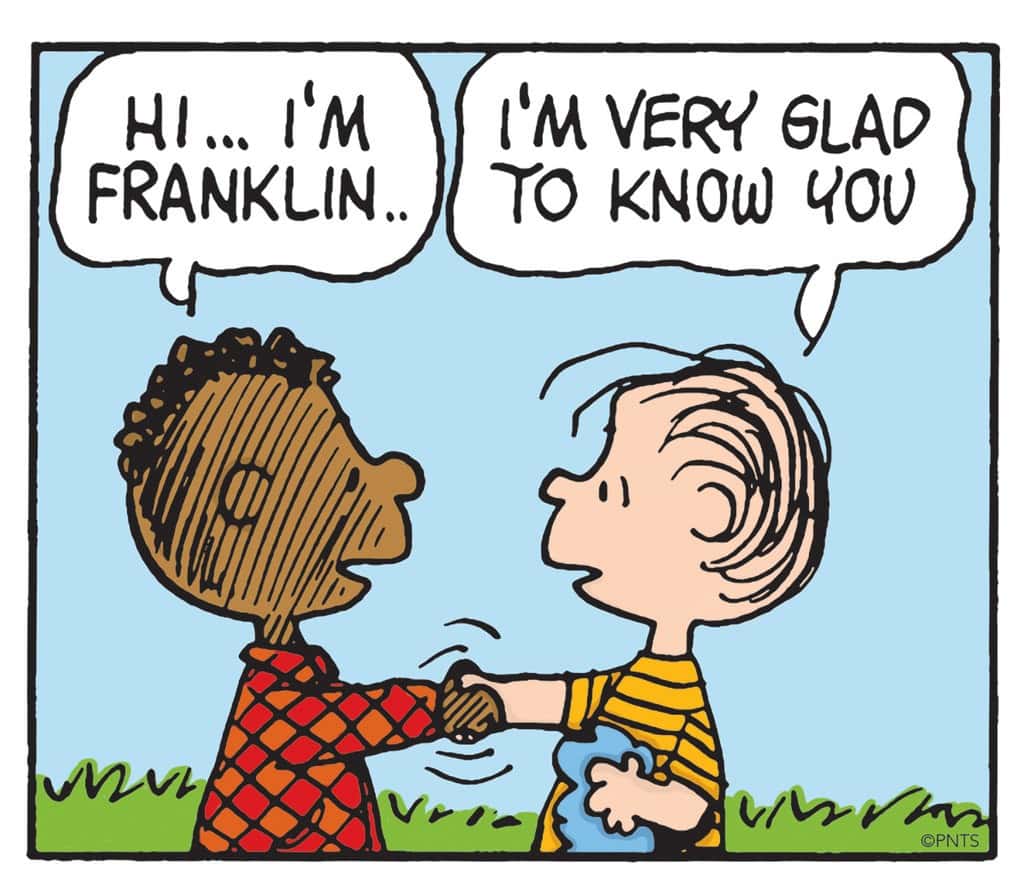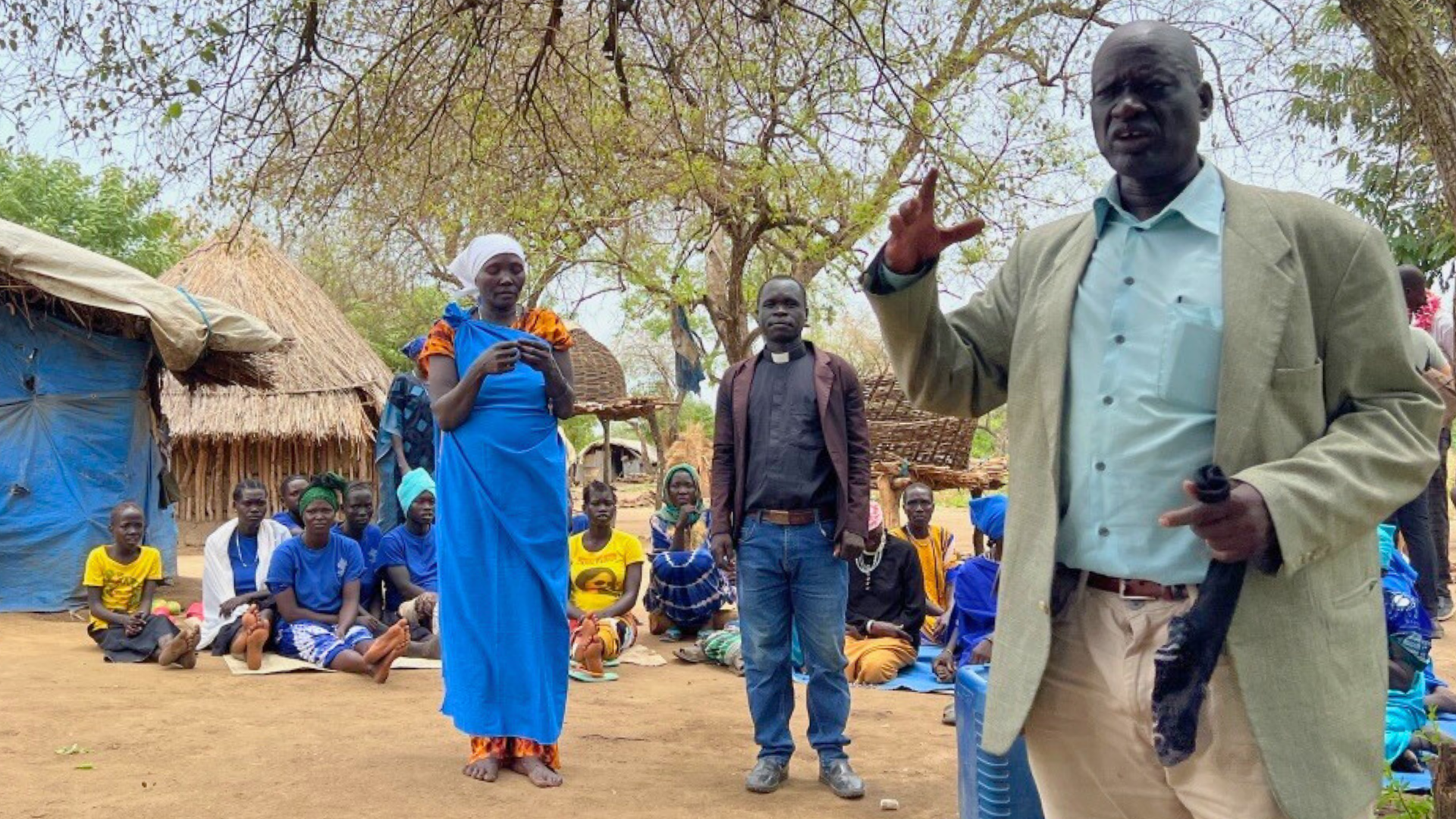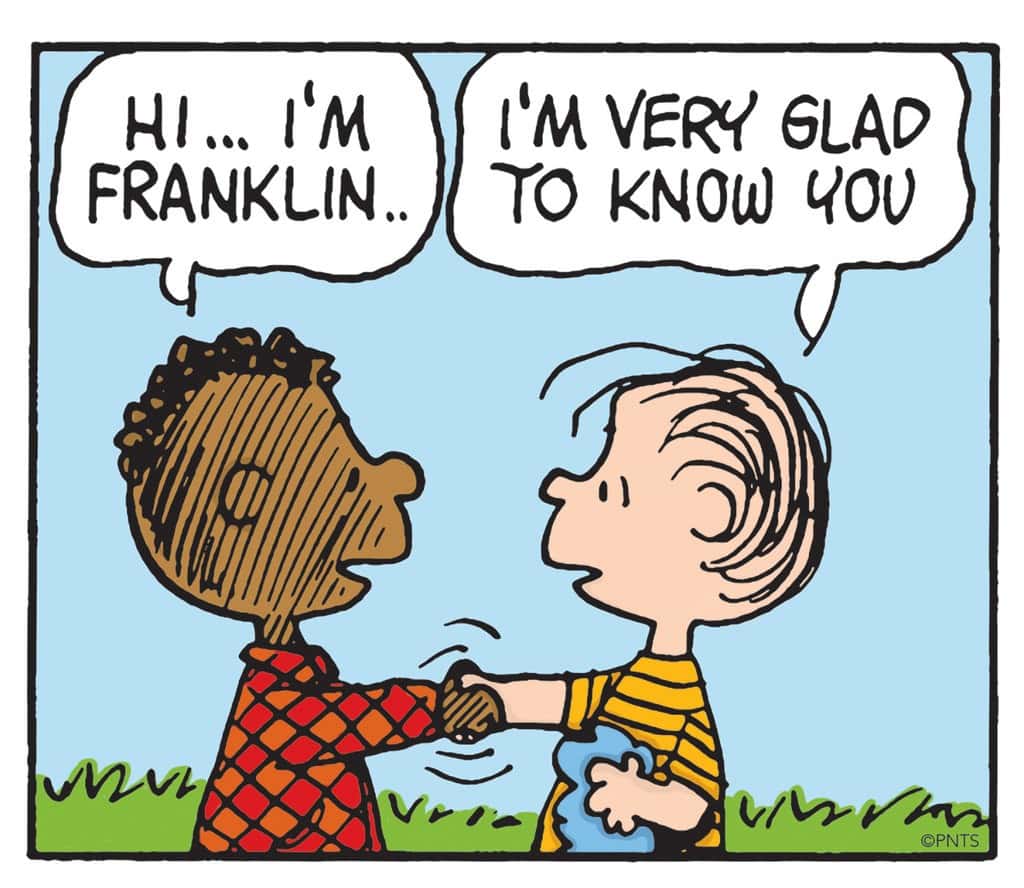 CHICAGO, IL (July 31, 2018)—It should come as no surprise to Covenanters who read the “Peanuts” comic strip over the years that for most of his life, cartoonist Charles Schulz was a devout Christian. According to the author of A Charlie Brown Religion: Exploring the Spiritual Life and Work of Charles M. Schulz, more than 560 of Schulz’s 17,800 strips contain explicit religious, spiritual, or theological references.
CHICAGO, IL (July 31, 2018)—It should come as no surprise to Covenanters who read the “Peanuts” comic strip over the years that for most of his life, cartoonist Charles Schulz was a devout Christian. According to the author of A Charlie Brown Religion: Exploring the Spiritual Life and Work of Charles M. Schulz, more than 560 of Schulz’s 17,800 strips contain explicit religious, spiritual, or theological references.
That faith inspired him to communicate in indirect ways his views of how people should treat each other. “I’m interested in doing a strip that says something and makes some comment on the important things in life,” he told people.
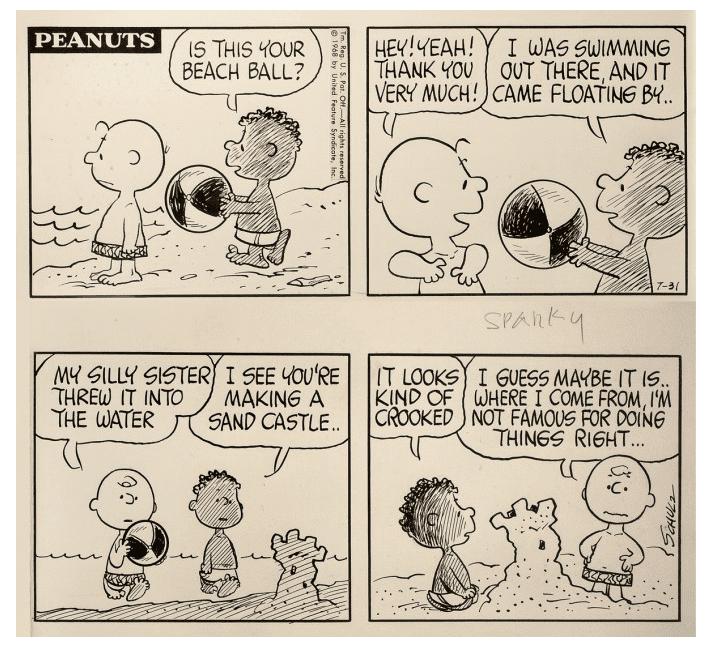 Today marks the fiftieth anniversary of one such strip. “Peanuts” has been widely loved for its loveable characters, but few people know the role it played in promoting racial unity.
Today marks the fiftieth anniversary of one such strip. “Peanuts” has been widely loved for its loveable characters, but few people know the role it played in promoting racial unity.
Fifty years ago Franklin Armstrong made his appearance as the first black character in “Peanuts,” an event that angered some Americans and inspired others.
In that first panel, a dejected Charlie Brown is looking out to sea as Franklin stands behind him, asking, “Is this your beach ball?”
Charles Schulz created Franklin after corresponding with Harriet Glickman, who wrote to him in the wake of Martin Luther King Jr.’s assassination. Glickman, a mother and schoolteacher, wrote to Schultz and other cartoonists to ask them to include a black character.
Although she was under no illusion that changes would happen overnight, she said comics played a strong role in shaping the attitudes of children and that including a black character would be important for race relations.
Glickman had written to many strip writers, but Shulz was one of only two to respond. Allen Saunders, who worked with Dale Connor to produce “Mary Worth,” said they feared the strip would be dropped if they included a black character.
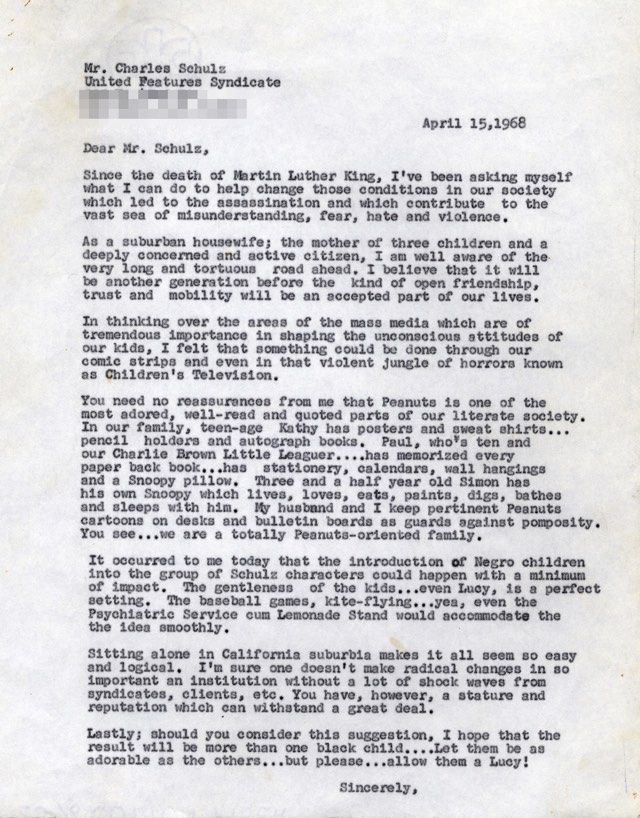
Schulz first expressed concern that if he created a black character, it would come across as patronizing. He wrote to Glickman, “I would be very happy to try, but I am sure that I would receive the sort of criticism that would make it appear as if I were doing this in a condescending manner.”
Glickman consulted with friends who responded to Shulz, saying that they believed including the character would be worth any accusations he received.
At the time “Peanuts” appeared in thousands of newspapers and was read by millions. And segregationist views in the country were strong. When Franklin made his appearance—on an integrated beach—fans across the South voiced their anger, and the backlash made the national news. Many newspapers threatened to pull the strip.
When the president of the comic’s distribution company expressed concerns about Franklin’s effect on the artist’s popularity, Schulz replied, “Either you print it just the way I draw it or I quit. How’s that?”
When Franklin was shown sitting in front of Peppermint Patty in school and playing baseball with the other kids, one newspaper editor wrote, “We have enough trouble here in the South without you showing the kids together in school.”
Over the years, Schulz received accusations of racism because Franklin did not have the singular quirks that distinguished the other characters. Also, in a scene from Charlie Brown Thanksgiving, Franklin was depicted sitting alone across the table from other characters, but Schulz had no control over the TV productions.
For the most part, however, reaction was positive. In 1965, Morrie Turner became the first African American cartoonist with a widely syndicated strip when he introduced “Wee Pals.” He wrote Schulz to tell him that he found his “handling and the treatment of the character excellent,” adding, “The day Little Orphan Annie has a black boyfriend, we’ll really have it made.”
Barbara Brandon-Croft, the first African American woman to have a nationally syndicated comic strip in the mainstream press, was 10 years old in 1968, and told a New York Times reporter earlier this year, “I remember feeling affirmed by seeing Franklin in ‘Peanuts.’ ‘There’s a little black kid! Thank goodness! We do matter.’”


